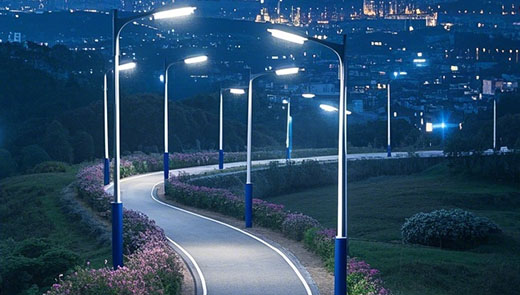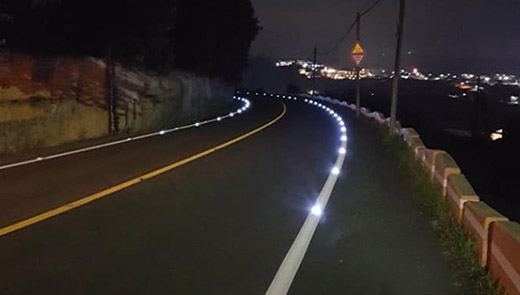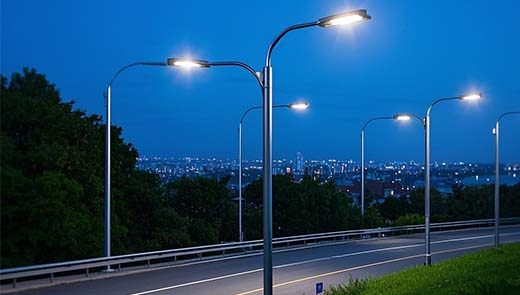Advantages and Disadvantages of Solar Street Lights
Solar street lights are an innovative lighting system that captures sunlight with the help of solar panels and converts it into electricity. This electricity is then stored in batteries to power LED (Light Emitting Diode) lights at night. Designed for outdoor lighting, these street lights are commonly found in streets, parking lots, sidewalks, parks, and other public areas.As an emerging lighting option, solar street lights have received a lot of attention for their advantages and disadvantages. Understanding the advantages and disadvantages of solar street lights can help individuals and public projects make informed decisions when choosing lighting options. Whether it's to reduce energy costs or minimize environmental impact, a deeper understanding of solar street lights is an important step toward sustainable lighting.
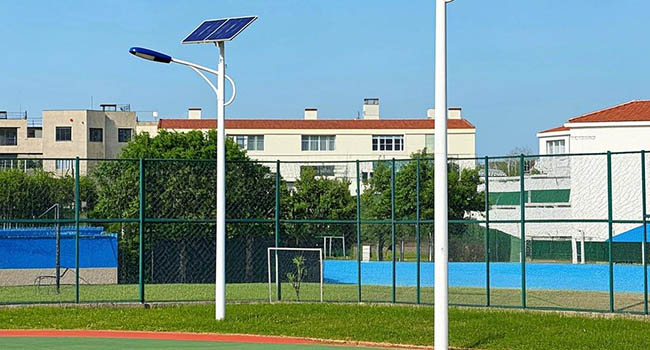
Why solar LED street light are widely used?
High efficiency of LED lighting
There is a limit to what we can do to reduce the energy consumption of traditional light sources. LED lighting has two significant advantages in improving efficiency and reducing costs. First, LED solar street lights are much more energy efficient than any previous form of lighting, which helps to significantly reduce energy consumption. Second, the high efficiency of LED lighting allows for much less frequent replacement, which saves on maintenance costs.
The synergy of solar and LED lighting
Efficient LED lighting technology allows solar applications to be utilized to their advantage. Because LED lighting requires less energy than any previous lighting source, it does not require large amounts of solar energy. In locations such as parking lots, sidewalks, and roadways, lighting is often only needed at night. Solar LED street lights are able to collect solar energy during the day and then convert it into electricity to power the light source at night.The perfect combination of the two utilizes the sustainable benefits of solar energy while demonstrating the energy-saving properties of LED lighting.
Advantages of solar street lights
Energy saving and environmental protection
Responding to the needs of global warming: Global warming caused by carbon footprint has become an indisputable fact. People are becoming more and more aware that using green energy helps to reduce carbon footprint. In order to protect our planet, environmentally friendly green energy is being vigorously promoted around the globe.Environmental advantages of solar street light: As we all know, non-renewable energy sources such as coal, natural gas and oil will be exhausted one day. Solar street lights do not need any fuel, and rely entirely on solar energy to run. Solar energy is unlimited and inexhaustible, making it an ideal green lighting option. With solar street lights, every one of them is contributing to reducing carbon emissions and mitigating global warming.
Cost-effective
Initial Investment Comparison: In terms of capital investment, there is a difference between solar street lights and traditional street lights. Traditional street lights are relatively simple to install and cost less; while solar street lights have a higher initial investment due to the inclusion of solar panels, batteries and other equipment.Comparison of long-term operation cost between traditional street light and solar street light:
|
Street Light Type |
Annual Electricity Cost per Light |
Annual Maintenance Cost per Light |
Annual Electricity Cost for 100 Lights |
Annual Maintenance Cost for 100 Lights |
|
Traditional Street Lights |
$1,825 |
$500 |
$182,500 |
$50,000 |
|
Solar Street Lights |
$0 |
$100 |
$0 |
$10,000 |
As can be seen from the data in the above table, traditional street lights rely on grid power supply, resulting in high electricity and maintenance costs. In contrast, solar street lights rely on solar energy, eliminating the need for electricity bills and having a low maintenance cost. In the long run, the comprehensive cost of solar street lights is significantly lower than that of traditional street lights, demonstrating obvious advantages in operating cost control.
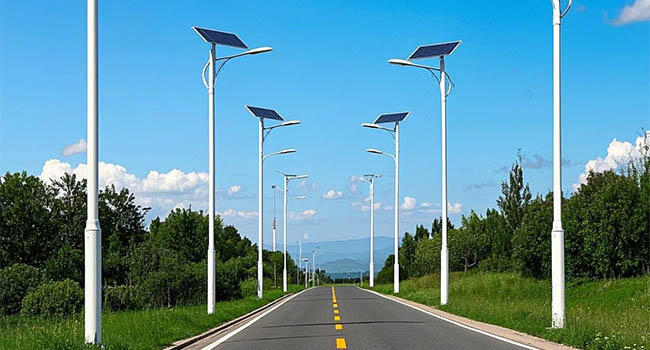
Low maintenance cost
Energy cost saving: each solar street light relies on solar power, which means no need to pay for electricity. Solar charge controllers intelligently manage light intensity, reducing the need to replace individual street lights and thus lowering maintenance costs.Automatic Operation and Low Maintenance Requirements: Once installed, the solar street lights operate automatically without human intervention. There is no need to regularly check the wiring and replace bulbs as with traditional street lights, further saving maintenance costs. Moreover, regardless of weather conditions or power outages, the solar LED street lights can stay on all night long, guaranteeing the stability of the lighting.
Easy installation, no electricity required
Complexity of Traditional Commercial Lighting Installation: A typical commercial electric lighting project involves a series of complex tasks including cable laying, digging up the ground, laying cable conduits, threading wires inside the conduits, and disposing of trench waste. Each process requires a significant investment in labor and equipment. In addition, the cost of equipment such as transformers, switchboards as well as distribution panels is quite high.
Ease of Installation of Solar Street Lights: Installation of solar street lights is quite different, as there is no need to make electrical connections. Each solar lighting system is self-contained, so there are no costs associated with cable laying, digging trenches, and so on. All that is required before installation is a sturdy base and a pit for the batteries. Overall, the installation process is very simple and easy.
Safe and durable
Safety hazards of traditional street lights: Due to aging materials, poor construction quality and power supply issues, traditional street lights may have potential safety hazards, such as leakage and short-circuiting, which pose a threat to the safety of pedestrians and maintenance personnel.
Safety and durability features of solar street lights: Solar LED street lights do not use AC power, so they do not have these defects. Moreover, solar LED street lights have the ability to generate electricity for up to 25 years or even longer, which makes them far more durable than traditional street lights and reduces the hassle and cost of frequent replacement of equipment.
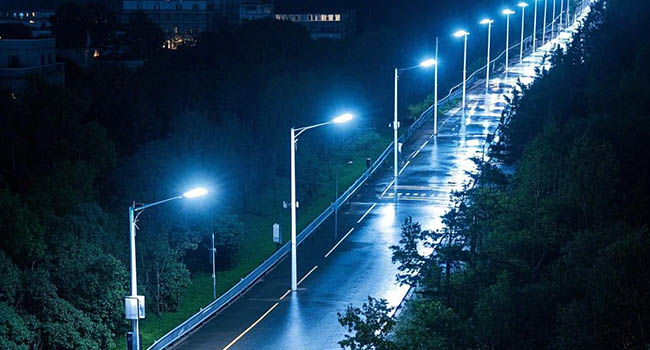
Disadvantages of solar street lights
High initial investment cost
Significant cost difference: solar street light installation requires a large initial investment cost, which is one of its obvious drawbacks. Compared to traditional street lights, solar street lights require a larger investment during the installation phase. For example, the overall cost of a solar streetlight can be up to three times that of a conventional streetlight with the same lighting efficiency. This high initial cost is a key disincentive for many people to invest in solar street lights.Consideration of Long-Term Cost Advantages: However, in the long run, solar LED street lights actually cost less to invest in when you consider the subsequent electricity, maintenance, and functionality costs that need to be paid. But for some projects with limited budgets, the high upfront investment is still a difficult barrier to cross.
Service life of rechargeable battery
Problems of common batteries: Generally speaking, common lead-acid batteries may not be able to reach the full-charged state after one year or even half a year of use. Once the charging efficiency drops 50%, it will definitely affect the lighting effect at night, especially on days of continuous rainfall. This not only reduces the quality of lighting, but also may have some impact on traffic safety.Selection of high-quality batteries: Therefore, it is crucial to select high-quality lithium iron phosphate batteries with a long life cycle in solar street light projects. Although the cost of these batteries is relatively high, they can effectively reduce the frequency of battery replacement and guarantee the stable operation and lighting effect of the street lights.
Risk of theft
High-value components attract thieves: Solar street lights contain high-value components, such as solar panels and batteries, which are very attractive to thieves. Moreover, since solar street lights are not connected to the power grid, thieves do not face the risk of electrocution and other life-threatening risks during theft.
Comparison with traditional street lights: In contrast, traditional streetlight lighting systems are relatively more risky to steal due to the presence of an electrical connection, which makes theft more difficult and dangerous, so solar street lights are relatively more risky to steal. This also increases the cost of security management during the use of solar street lights.
Battery replacement
Introduction of common battery types: Solar street lights usually use three types of batteries, namely lead-acid batteries, gel batteries and lithium batteries. Among these three types of batteries, the upgraded lithium-iron batteries have higher durability.Inevitability of Battery Replacement: Despite this, any rechargeable battery will run out of power over time and may need to be replaced several times before the solar street light reaches the end of its useful life. Not only does this increase maintenance costs, but it also requires regular battery status checks to ensure proper operation of the streetlight.
Performance is affected by geography and weather conditions
Geographical differences in solar radiation: Since solar energy comes from the sun, there are differences in the amount of solar radiation in different areas. Areas with high solar radiation are ideal for installing solar street lights, which can give full play to their advantages.Impact of weather on street light performance: However, some areas may often be cloudy or snowy in winter, which can seriously affect the performance of solar street lights. In this case, the solar street light may not work properly, and the light brightness may not meet the road lighting standards, or may not even be able to light up, causing inconvenience to night traveling.
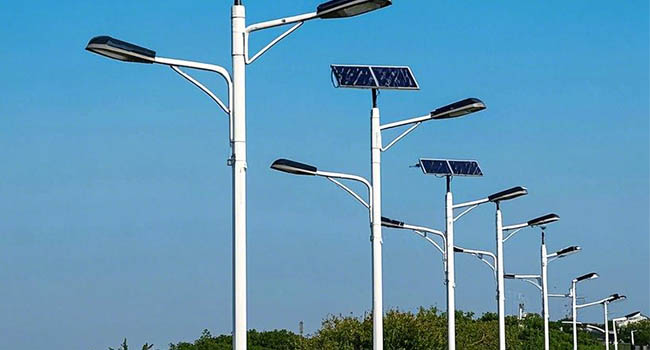
Things you should pay attention to when buying solar street lights
Solar panel quality
Solar panel is one of the core components of solar street light, and its quality directly affects the power generation ability of the street light. When purchasing, you should verify whether the solar panel is a high-quality product and whether it can generate enough electricity to charge the battery. High-quality solar panels have high conversion efficiency and can collect more energy under limited light conditions, ensuring that the street light has sufficient power supply at night.
Battery capacity
Battery capacity determines how long a streetlight can stay lit at night. Make sure that the selected battery can provide the streetlight with power for the expected length of time. For example, if a streetlight needs to be illuminated for 8 hours a night, the battery capacity should be able to meet this demand to avoid a situation where the streetlight goes out prematurely due to insufficient power.
Lumen
Lumens represent the brightness of a streetlight. When purchasing, make sure that the street light is bright enough to provide adequate lighting for the area where it is located. Different places have different lighting requirements, such as roadway lighting usually requires a high lumen count to ensure traffic safety; while the lighting requirements for park trails are relatively low, but also need to meet the basic walking needs.
Durability
Solar street lights are exposed to the outdoors for a long time and need to have good durability. You should choose street lights made of weather-resistant materials, which can withstand the erosion of the natural environment, such as wind, sun, rain, etc., prolonging the service life of the street lights and reducing the cost of replacement and maintenance.
Warranty
In order to avoid losses caused by quality problems of street lights, make sure that the chosen product has a reliable warranty. The warranty terms should clearly cover the scope and duration. During the warranty period, if the street light has quality problems, the manufacturer should be responsible for free repair or replacement to provide consumers with protection.
Conclusion
Solar street lights offer energy savings, eco-friendly, low maintenance, and easy installation but come with higher upfront costs and battery limitations. Key factors to consider include panel quality, battery capacity, lumen, durability, and warranty. Understanding these pros, cons, and buying tips helps you choose the best solution for your needs, budget, and location.

